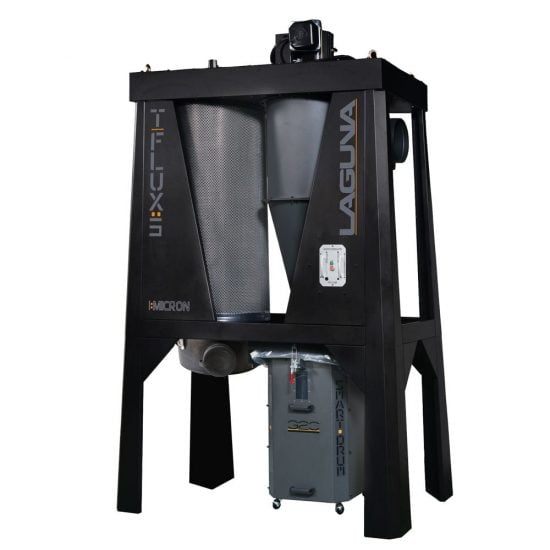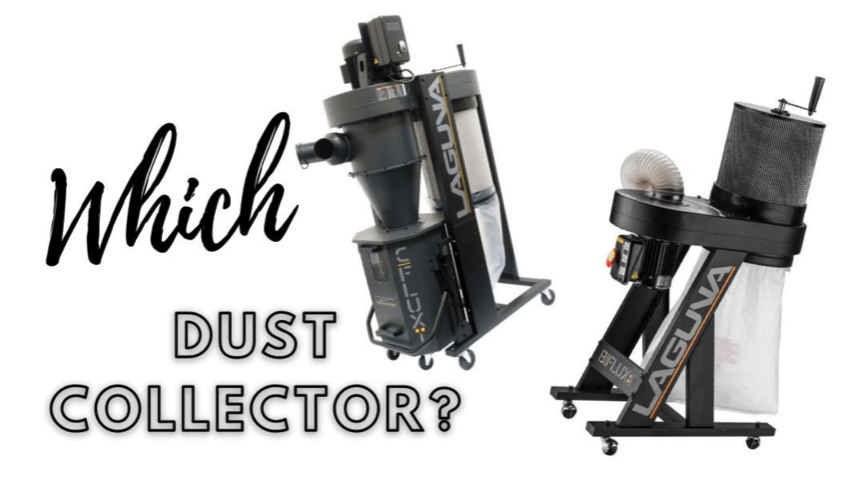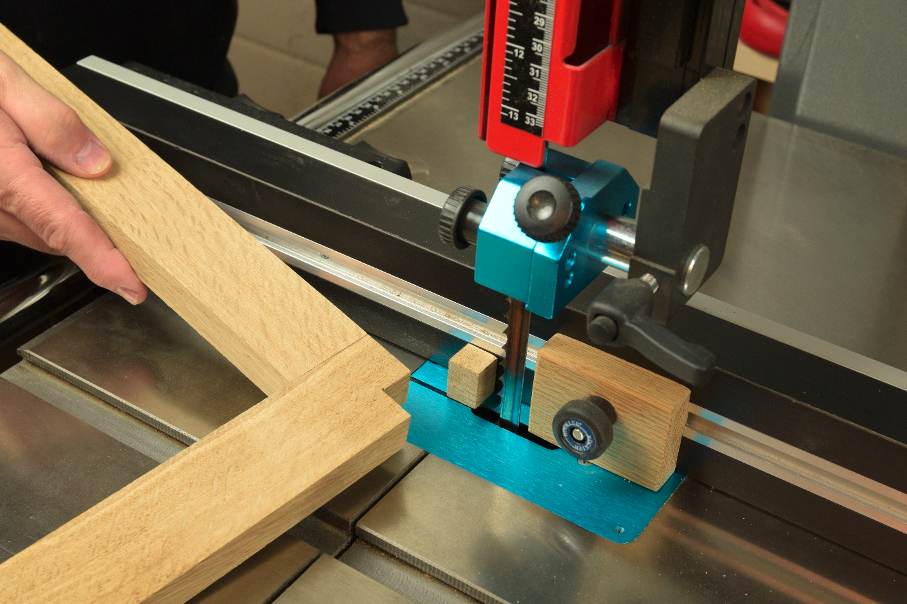Used to keep the air inside your shop breathable, dust collectors are vital to maintaining a healthy work space. You do not want to be breathing wood particles in the air.
In this article, we will be providing the top tips for our cyclonic dust collectors here at Laguna Tools.
Keep in mind that safety should always come first in the woodworking business, and keeping your workshop air clean should be a top priority.
Tip #1: Maintain a Large Diameter for Large Inlets
Cyclonic dust collectors vary in size and shape. Some are smaller than others, although we recommend using a dust collector with a large inlet for better airflow. The larger the trunk of the inlet is, the cleaner and more breathable your workshop air will be.
For example, the difference between an inlet with a 4-inch diameter and one with a 5-inch diameter is extreme. By simply increasing the diameter of the inlet by 1-inch, that will give you 2x the airflow. This means that you will be breathing clean air much faster.
Tip #2: Find a Flex Hose with Metal Coils
Flex hoses are commonly used for drops to tools. However, you should limit how often you use the flex hose. The solid pipe hose should be the one that gets the most use. This is because the flex hose has 3x the resistance to airflow as the solid pipe.
Ideally, the best flex hoses are made with metal coils on the outside of the hose. The reason you want metal coils is to dissipate static electricity. As the dust collector sucks in particles through the flex hose, static electricity builds up.
Metal coils can be grounded, which remove static from the dust collector system. You also want to check the inside of the hose to see if it’s smooth. Smoother hoses are best for optimal air intake.
Tip #3: Spiral Pipes Are Best for Large Dust Collectors
There are a few different options for solid pipes used by cyclonic dust collectors. If you have a small dust collector system and are looking for something cost-efficient, you can opt for standard HVAC pipes.
These are thin-walled and very basic. You cannot use these for larger dust collector systems. They will collapse under the pressure created by stronger motors.
Large cyclonic dust collectors with more horsepower work well with spiral pipes. These are designed with a much thicker gauge, which makes them sturdier to stand up to the higher horsepower. They will not collapse.
Tip #4: Avoid PVC Pipes
PVC pipes are made out of plastic. Even though it is a stronger, industrial type of plastic, it is not ideal for cyclonic dust collectors.
First, it needs to be grounded. Plastic pipes can store static electricity, which can lead to your dust collector system getting clogged up.
You can ground PVC pipes by running a metal wire throughout the length of each pipe. This can be tedious and time-consuming, but it can be done if your mind is set to it.
Another reason why PVC pipes aren’t the best for cyclonic dust collectors in woodworking shops is because not all PVC pipes and joints are compatible with these dust collector systems.
They lack the seamless onboarding of the metal spiral pipes, and they can significantly limit the amount of airflow into the system. If you do decide to go with PVC pipes and joints, at least avoid the T-shaped joints.
These cause an unnecessary backup in the airflow. You want to look for joints that are designed for a smoother intake into dust collectors.
There is a slight upside to PVC pipes, however. Since they are plastic and designed with grooves on the ends, they can be easily screwed together. They do not require glue as the metal pipes do.
So, in the event of a clog (which you will eventually get when you have PVC pipes), you can easily unscrew the joints to clean out the affected section of piping.
Tip #5: Use Silicone Caulking
If you have decided on metal pipes, spiral or HVAC, you should use silicone caulking to securely piece each pipe and joint together.
This is the recommended product our experts here at Laguna Tools use for cyclonic dust collector installation.
It will hold very well over the years. Keep in mind that metal pipes are ideal for dust collector systems, and you won’t have to unclog them as often as you would with PVC pipes.
Classic Dust Collectors
We offer a wide range of classic dust collectors for your woodworking needs. We currently have nine systems available and an air filtration unit.
These class machines can generate between 1 and 3 horsepower, depending on which one you get. Some of the higher-end dust collectors come with HEPA Filtration for enhanced airflow and optimal air quality.

Industrial Dust Collectors
As for industrial dust collectors, we have seven different units to choose from. These are ideal for extracting fumes as well as wood chips and dust particles from the air.
These machines produce between 5 and 10 horsepower, depending on which one you need. Our top-of-the-line industrial dust collector is the E|Flux Series Fume Extractors.
It comes with a Tetrix HEPA-certified filter, a jet-pulse cleaning function, pneumatic waste bins, and a touchscreen interface to manage the operations of the system more efficiently.
Create the Perfect Woodworking Shop with Laguna Tools
If you are looking to build your first woodworking shop or you want to take yours to the next level, our experts here at Laguna Tools can help.
We’ve got a large selection of woodworking machines and tools that can cater to your every need. We even have a useful video series that showcases how to use all of our machines properly and maintain them.
To learn more about our products or more about woodworking tools, contact our team today.




